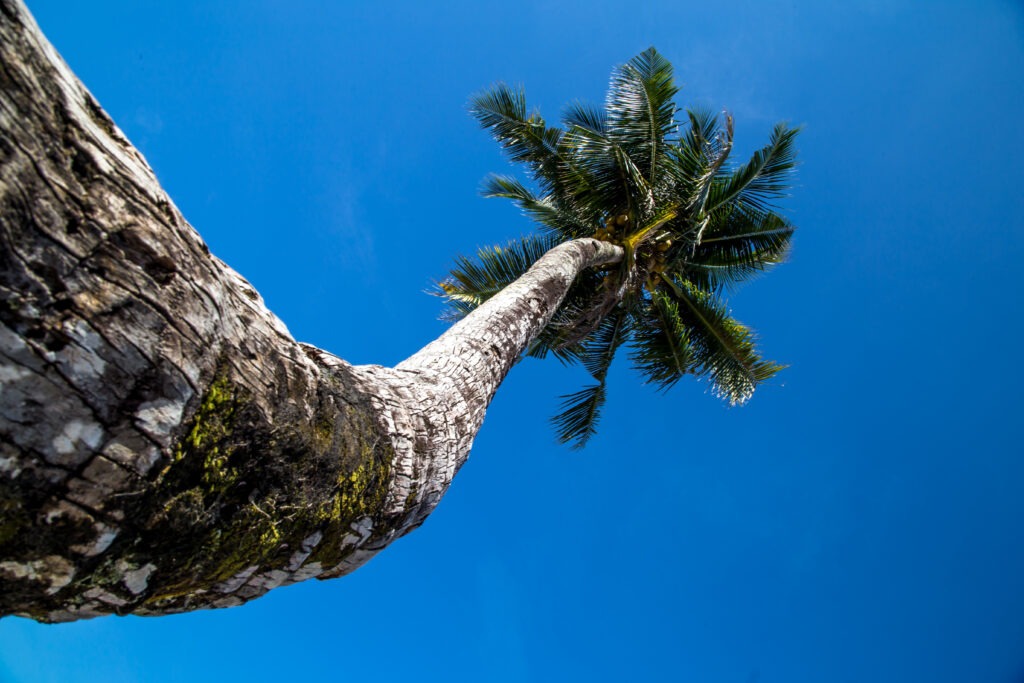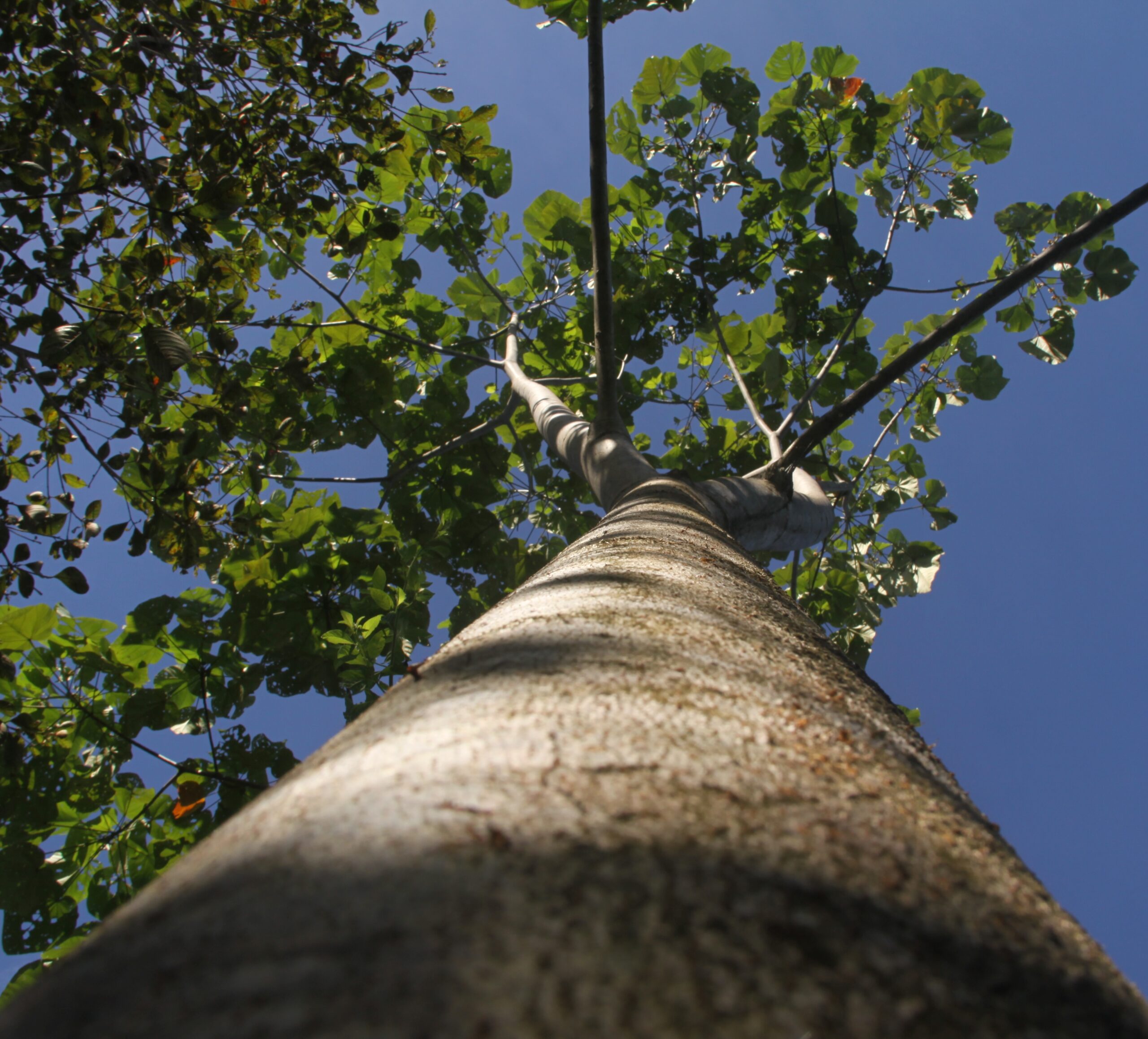Month's Subject: The race to the light
Why grow high?
Plants need light for photosynthesis. The more light they get, the more they can synthesize and the more energy they can use for growing or reproduction. Therefore it pays for trees to grow tall and lift their leaves above neighbouring plants and trees. There is, however, a limit to how high trees can grow. Pumping up water from the roots to the leaves takes energy too. Furthermore, higher trees catch more wind and have to make stronger trunks and branches to withstand the power of the wind.
Trees also need nutrients, especially nitrogen, to grow, but soils in the tropics are infertile. Trees have come up with two solutions. Almost all trees have a symbiotic relationship with fungi. Fungi are good at breaking down dead leaves and extract nutrients. The trees provide energy, in the form of sugars to the fungi and the fungi provide nutrients to the tree. Fungi are so efficient in absorbing nutrients from decaying leaves that 95% of the nutrients is absorbed before they reach 10 cm deep, As a result, most trees in tropical forest have a shallow and widespread root system. Almost all trees make us of this system. Interestingly, when trees encounter very fertile soils and no longer need the fungi, they end the relationship.
The second solution has only been found by members of the bean family. These plants enter into a symbiotic relationship with nitrogen-fixing bacteria from the genus Rhizobium. The bacteria can transform nitrogen from the air into ammonia, that the trees can absorb and use. In return, the plants provide the bacteria with other nutrients and shelter in dedicated root nodes.
Some fungi also associate with nitrogen-fixing bacteria that live in decaying material, Allowing for an increased absorption of nitrogen, which in turn is shared with the host tree.

Why make a trunk when someone else has already done so?
Not all plants have invested in trunks to get up high. Vines climb up the trunks of other trees to get to the light. They have their own roots and leaves, but do not invest in a big sturdy trunk. To climb up, the vine either circles the tree, or attaches itself with leaves or twigs that are modified to attach themselves to the host tree. Once they reach the canopy, the vines start spreading out in the crown of the tree and often into the crowns of other trees. To withstand the forces of trees moving independently from another, vines have flexible stems and branches with a high tensile strength. Vines do not parasitize on the trees, they only use them for support. But once up in the canopy, vines compete for light and can slow tree growth down with 20%
Other plants, especially orchids and bromeliads, grow high in the canopy on the branches and trunks of trees. Their roots cover the surface of trunks and branches of their support tree, and do not reach the ground. These plants, collectively known as epiphytes, use the water that drips along a tree trunk or branch when it rains and they get their nutrients from decomposing debris that gathers in nooks and crannies on the branches of their support trees. This is a relatively scarce source of nutrients and epiphytes therefore tend to grow slowly. Epiphytes only use a tree for support, they do not parasitise on the tree.
Strangler figs also start life high in the tree, where a seed carried their by birds in their droppings, germinates. However, the strangler fig starts growing roots towards the soil and branches up into the tree. Over the course of decades, the roots and branches of the strangler fig completely envelop the host tree and kill it.

Prompt List
- Tall trees in our area are Cuipo, (Cavanillesia platanifolia) Nispero (Manilkara staminodella), Espavé (Anacardium excelsum and monkey condom (Couratari guianensis). Common vines and lianas are monkey ladder (Schnellea guianensis), Sea Bean (Mucuna mutisiana) and Vanilla (Vanilla platanifolia). Common epiphytes are Tillandsia bulbosa, Tillandsia flexuosa, Dimerandra emarginata and Sobralia decora. We would like to see an illustration of a large tree that has vines climbing along its stem and epiphytes growing on its branches.
- The relationship between trees and fungi, with fungi breaking down leaves, would be an interesting illustration. Also an illustration showing how nitrogen-fixing bacteria live in tree roots would be welcome.






